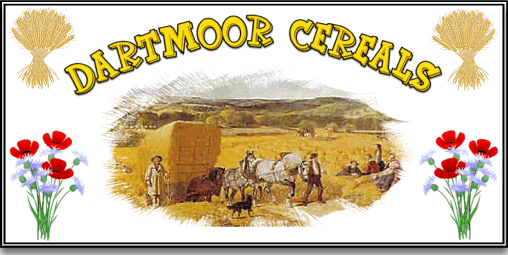
In view of the geography and climate of Dartmoor it could be logical to say that there would have been very little cereal cultivation on the moor but amazingly this would be wrong. There has always been the idea that cereals were not grown above the 1,000ft (304.8m) contour line. Granted it would have been hard to crop crops on the high moor but the archaeological record does show evidence at lower altitudes. The earliest evidence of cereal cultivation dates back to the Bronze age in the form of pre-historic field systems. It is likely that the crops were grown in small fields of about a quarter to half an acre in size which were located near the settlements. Denford, 1975, p.187 tells us that in his opinion “it is reasonable to assume that the chief crop cultivated in the fields of our (Dartmoor) arable settlements was barley.” In general it can be said that the arable settlements tend to be on the eastern side of the moor. Gerrard, 19997, p.41 comments that:
“the settlements on the eastern side being seen as lying within an area of lower rainfall and so better suited to arable cultivation, while those elsewhere were concerned largely with animal husbandry on soils which were too wet to stand prolonged cultivation.”
The deserted medieval settlement at Houndtor was built around 1250, it is situated at an altitude of about 1,090ft (332m) and excavations have revealed 3 corn-drying barns. Whilst drying barns alone do not prove that corn was being grown the pollen sequence shows a high frequency of cereal grains comprising of oats and rye, Austin, 1985, p.149. Charred grains of oats were found in one of the corn-drying barns. This evidence suggests two things, firstly cereals were grown, and secondly, that the climate must have been wet to need corn-drying barns. This would reinforce the idea that the settlement was abandoned between 1300 -1310 due to serious decline in the climate – it became too wet and cold to farm there. Both oats and rye will grow relatively well on the wet, acid soils of Dartmoor whereas wheat and barley will not.
Possibly one of the most comprehensive surveys of the agriculture in Devon was undertaken by Charles Vancouver in 1808. In his work he divided the country into eight distinct ‘districts’ of which 5 cover Dartmoor area and are highlighted on his map below
:
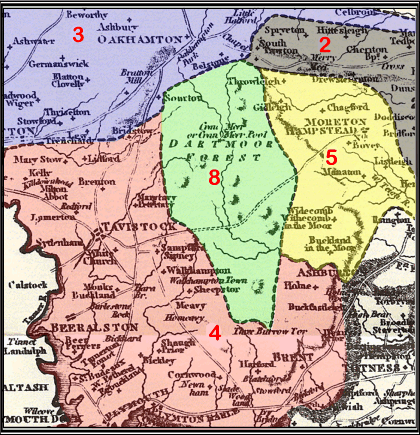
By the time of his survey, the growing of Rye had died out on and around Dartmoor, there is not a single mention in any of the districts being grown. Although at one time rye was cultivated considerably across the county as is evident from the amounts visible in the lower layers of ancient thatches it died out in favour of the other cereal crops.
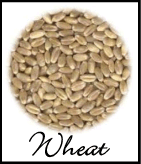
In the Dartmoor section of district 2 the wheat was sown at 2 bushels an acre, after harvest the stubble is ploughed under and then resown with wheat. Vancouver, 1808, p.156, notes that a days wages for reaping wheat was 2s 6d plus as much ale, cider, and eating as required. The workers then return to the farmhouse to “supper, carouse until between twelve and two in the morning, stagger home, and after a few hours of rest, re-commence reaping between eight and nine o’clock the following morning.”
In district 3 the wheat was sown at between 6 and 8 pecks (4 pecks = 1 bushel) per acre and there is mention of, p.156, “a very fine sample of wheat coming from the enclosed cultivated lands at the foot of Dartmoor.” In one example it took eight men to sown an acre of wheat which cost 17s. comprising of 1s. 2d. at day in labour, two quarts of cider per man at 3d., bread and cheese at 3d a man, and one man per acre to shovel out the furrows at 1s. 11d. It cost 8s an acre, including drink or meat allowance to reap and bind an acre of wheat.
In the country situated below the southern foot of Dartmoor in district 4 the wheat was sown at 2 – 2.5 bushels an acre and averaged a return of about 20 bushels an acre of grain. The area west of the River Dart is sown with wheat from November to March and averages a return of 26 bushels of wheat.
The wheat husbandry in district 5 is “various,” but wheat is sown at 9 – 10 pecks an acre which yielded about 20 bushels of grain.
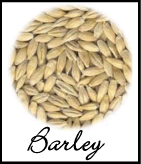
In district 2 the barley tended to be sown after a crop of wheat. The wheat-stubbles would be ploughed under at Christmas and again in April and the barley sown at 3 – 3.5 bushels per acre and yields on average 30 bushels per acre. Drewsteignton was traditionally an area which produced quality barley yielding 28 -32 bushels an acre. The barley is either thrashed by mill or hand.
District 3 was not a great producer of barley but where in the eastern or Dartmoor section it was grown the seed was sown at 4 bushels and acre and in return yielded around 28 bushels.
The average yield of barley in district 4 was around 28 bushels an acre however in the Buckland and Widecombe area it was said to be “thin in form, thick in skin, and altogether a much inferior sample.”
Very little is mentioned about district 5 except that the average barley yield throughout the area was 36 bushels which made it the highest yielding area for barley.
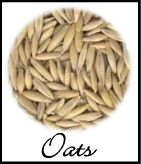
In district 2 the oats were sown at about 2.5 bushels per acre and returned around 40 bushels and acre.
District 3 tended to grow black oats after wheat or barley crops, the seed would be sown at the beginning of March at 5 bushels to the acre which would then yield around 26 bushels an acre.
There were very little oats grown in district 4 as the land favoured barley. But what oats were cultivated were sown at between 5 and 6 bushels an acre which would be expected to yield 40 bushels on the stronger land and 25 on the weaker grounds
In district 5 oats were used as a break crop following wheat and barley and were said to bring in about 40 bushels.
You will notice that in all the cases of cereal cultivation there is no mention of any activity on central Dartmoor or district 8. This is mainly because the area was too wet, cold, and contained acidic soils.
As with any crop, the fields for planting needed to be fertilised, especially on Dartmoor where the soil was so acidic. For centuries the only fertilisers available were animal dung and ash. In the case of dung this would come from the accumulations gathered from cattle and horses that were housed in the winter byres and shippens. In the spring the dung would be cleared out into a waggon and spread on the fields. In many cases a dung-pit would be dug to collect the effluent or in many cases the byres and shippens would be built on a slope this would allow the effluent to flow out directly on to the land. The other source of dung would be sheep, these would be folded in a small area of a field by means of wooden hurdles which would then be rotated around the field ensuring a complete coverage. The biggest advantage of this method was that the small cloven hooves of the sheep would treat the dung directly into the ground. It was always said on Dartmoor that bracken which was used for bedding housed stock later made an excellent fertiliser.
Ash would be collected from the household hearths and was ideal for countering the acidic soils. On Dartmoor farms the ash would be collected in the ‘ash house‘ which was a purpose built building The construction of these ‘houses’ varied but all would have a small hatch which faced the farm house, this would be where the ash was poured in. On the other side was a larger door where the ash would be shovelled out into a cart. Most had stone roofs covered with turf to keep them watertight, the turf was always on the outside to ensure a rogue ember could not blow into the roof and set it alight.
The first artificial fertiliser used on Dartmoor was limestone that would be burnt in kilns to produce the powdered lime. This would usually be brought up onto the moor by packhorse or cart and then burnt in small kilns on the farm. Sometimes the ready burnt lime would be transported on packhorses in long sacks, the danger here was that if any of the powder came into contact with the animals back it would cause considerable discomfort and burning.
Once the land was cleared and fertilised the seed would be sown. At first this was done by broadcasting the seed by hand, this was not as easy as it seems as it was important to get an even spread. It would involve strapping a pan or basket to the sower’s waist (on Dartmoor the pan was known as a ‘zellup’ or ‘seed lip’) who would then pace the field scattering a handful of seed every three or four steps, alternatively to the left and right. Then the ‘seed fiddle’ was introduced, this looked like a fiddle with a sack tied to it. The idea was that the sack slowly poured seed onto a plate that was spun around by a fiddle-like bow with a cord attached to the plate’s base. The sawing action turned the plate which in turn centrifugally broadcast the seed. Although mechanical seed drills were invented they were not widely used on Dartmoor where the traditional methods were adhered to. This was mainly because the small acreage that was under corn did not warrant the expense of such costly machinery.
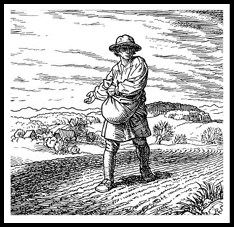
Having sown the seed the field would then be harrowed and rolled, many of the heavy rollers were made from moor granite. The field would then be hoed to keep the weeds down this was done by hand or a horse drawn hoe.
Once the corn was ripened it then had to be harvested which again was usually done by mowing with scythes, stacking the shocks (sheaves), carting back to the farm for hand threshing and then milling the grain. Harvest was always a busy time and all efforts were concentrated to gather the harvest as quickly as possible. Once the last shock was cut the harvesters could ‘cry the neck’ and retire back to the farmhouse for a slap up meal.
What wheat was grown was used for bread making and the straw for thatching. Barley was used for brewing ale or as a crushed animal feed and oats were treated as a fodder crop for animals.
Despite advancements in crop husbandry, machinery, and new hardier strains of cereals the final harvest was very much dependant and weather, weeds and disease. If a disastrous combination of the above came together it could mean a total loss to the farmer. So it is not surprising that all farmers lived in fear of heavy rain or drought. Imagine then what a Dartmoor farmer felt having to live with the extreme climate of the moor?
Bibliography.
Austin, D. 1985 A New Landscape Context for Houndtor, Medieval Archaeology No. 29.
Denford, G. 1975 Economy and Location of Bronze Age ‘Arable’ Settlements on Dartmoor, The Institute of Archaeology No.12.
D.N.P.A. 2002 Houndtor Deserted Medieval Settlement, English Heritage Leaflet.
Gerrard, S. 1997 Dartmoor, Batsford, London.
Vancouver, C. 1969 Agriculture of the County of Devon, David & Charles, Newton Abbot.
Unless your name is ‘dobbin’ and you fancy a crib full of oats there are few traditional recipes using whole grain. But here is a nice pudding served at harvest time;

Harvest Pudding.
Ingredients
6 – 8 slices of medium sliced buttered bread
1lb (453 gm) cooking apples, peeled, cored, and sliced
2oz (56 gm) shredded suet
3 oz (85 gm) soft brown sugar
2 oz (56 gm) raisins
Grated zest of one lemon
2 medium eggs
½ (284 ml) pint of milk
Method
Line a pie dish with some of the buttered bread slices. Mix together the apples, raisins, lemon rind, sugar and suet. Fill the pie dish with the mixture and then cover with the rest of the bread – buttered side up. Beat together the eggs and milk and pour over the top of the bread. Cover and leave to stand in a cool place for 2 hours. Preheat the oven to 180ºC/350ºF/gas mark 4 and bake the pie for 1 hour, rotating a 180º turn halfway through. Serve hot with dollops of clotted cream – hmmmm.
 Legendary Dartmoor The many aspects past and present of Dartmoor
Legendary Dartmoor The many aspects past and present of Dartmoor

Do we know what animals were used to provide power in the early days of the reaves?
Is there any evidence of ox yokes / ard ploughs?
When did red deer / wild boar become hunted to virtual zero on Dartmoor?